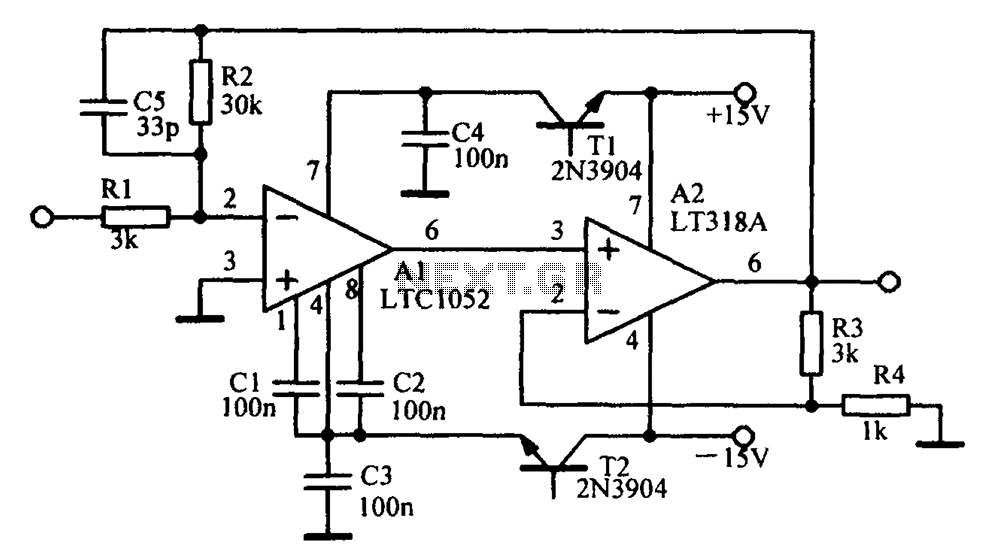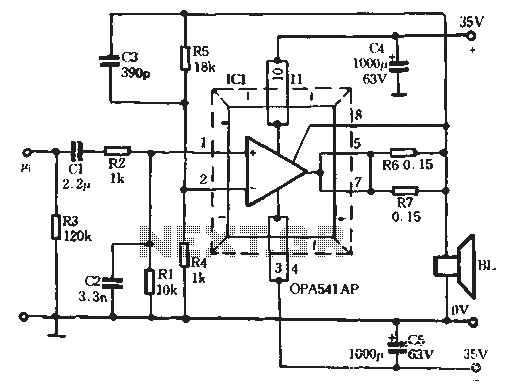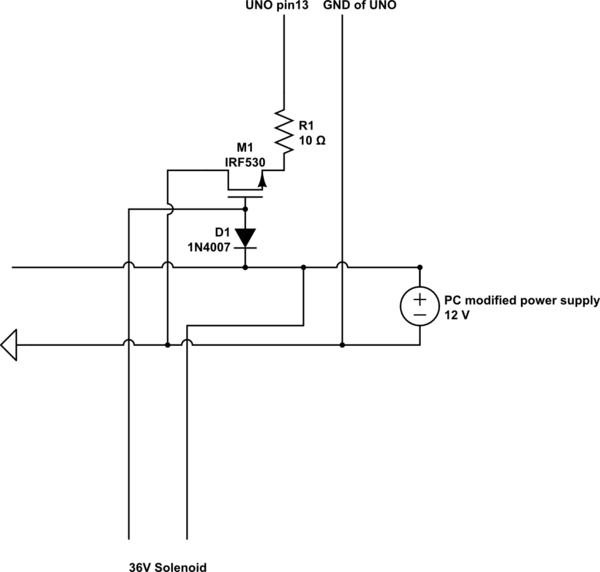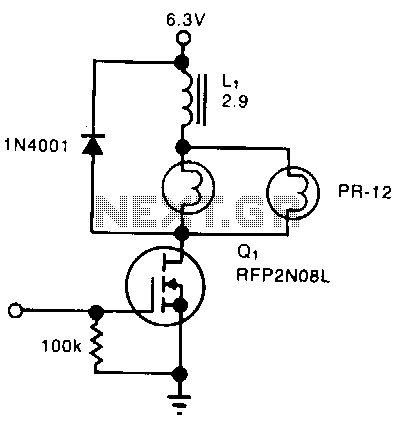
9 Volt 2 Ampere DC Power SupplyCircuit

A simple 9 Volt, 2 amp power supply utilizing a single integrated circuit (IC) regulator. This circuit is straightforward, as the regulator handles the majority of the work. The component used is the 7809 voltage regulator.
The circuit consists primarily of the 7809 voltage regulator, which is designed to provide a stable 9V output from a higher input voltage. The 7809 is a linear voltage regulator that can supply up to 1A of current, but it can be configured with additional components to handle up to 2A, depending on the heat dissipation and thermal management employed.
To construct the power supply, the input voltage, typically ranging from 12V to 35V, is fed into the input pin of the 7809. It is essential to ensure that the input voltage does not exceed the maximum rating of the regulator to prevent damage. The output pin delivers the regulated 9V, while the ground pin is connected to the circuit's common ground.
To enhance stability and performance, it is advisable to include input and output capacitors. A 0.33µF ceramic capacitor is recommended at the input to filter out high-frequency noise, and a 0.1µF ceramic capacitor at the output to improve transient response. Additionally, a larger electrolytic capacitor (typically 10µF to 100µF) can be placed at the output to provide further stability and handle load variations.
Thermal management is crucial when operating at higher currents. The 7809 regulator will dissipate heat proportional to the voltage drop across it and the current flowing through it. For instance, if the input is 12V and the output is 9V with a load drawing 2A, the power dissipation will be (12V - 9V) * 2A = 6W. A suitable heat sink should be attached to the regulator to prevent overheating and ensure reliable operation.
In summary, this simple 9V, 2A power supply circuit effectively utilizes the 7809 voltage regulator, complemented by appropriate capacitors for stability and a heat sink for thermal management, making it a reliable solution for various electronic applications.A simple 9 Volt 2 amp supply using a single IC regulator. There is little to be said about this circuit. All the work is done by the regulator. The 7809 c.. 🔗 External reference
The circuit consists primarily of the 7809 voltage regulator, which is designed to provide a stable 9V output from a higher input voltage. The 7809 is a linear voltage regulator that can supply up to 1A of current, but it can be configured with additional components to handle up to 2A, depending on the heat dissipation and thermal management employed.
To construct the power supply, the input voltage, typically ranging from 12V to 35V, is fed into the input pin of the 7809. It is essential to ensure that the input voltage does not exceed the maximum rating of the regulator to prevent damage. The output pin delivers the regulated 9V, while the ground pin is connected to the circuit's common ground.
To enhance stability and performance, it is advisable to include input and output capacitors. A 0.33µF ceramic capacitor is recommended at the input to filter out high-frequency noise, and a 0.1µF ceramic capacitor at the output to improve transient response. Additionally, a larger electrolytic capacitor (typically 10µF to 100µF) can be placed at the output to provide further stability and handle load variations.
Thermal management is crucial when operating at higher currents. The 7809 regulator will dissipate heat proportional to the voltage drop across it and the current flowing through it. For instance, if the input is 12V and the output is 9V with a load drawing 2A, the power dissipation will be (12V - 9V) * 2A = 6W. A suitable heat sink should be attached to the regulator to prevent overheating and ensure reliable operation.
In summary, this simple 9V, 2A power supply circuit effectively utilizes the 7809 voltage regulator, complemented by appropriate capacitors for stability and a heat sink for thermal management, making it a reliable solution for various electronic applications.A simple 9 Volt 2 amp supply using a single IC regulator. There is little to be said about this circuit. All the work is done by the regulator. The 7809 c.. 🔗 External reference





